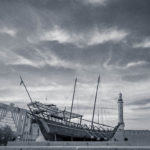-
Malaysia in the 21st Century
By Ayman Ahwal
Categories : Islam, The Environment
Malaysia’s position in the world at the present time is as unique as it is strategic. The country has earned for itself a voice in international affairs. Although the former Prime Minister, Dr Mahathir, never hesitated in many circumstances to voice vehement criticism of the Western world, its structures, strategies and modus operandi, this has not until now created an impression of Malaysia being irrationally anti-Western, anti-American, etc as has been the experience of many other “Muslim” or “Third world” countries. This must be seen as an achievement in itself.Malaysia’s relative autonomy in outspoken opinion and hence its influence in international ears and arenas is no doubt partly but not entirely due to Malaysia’s economic progress over the past few decades. This has commanded some degree of respect from the West and open admiration from nations of the South.
There are, however a number of other elements that contribute to Malaysia’s success in international affairs. Among these would be the quality and consistency of Malaysia’s diplomacy (including public relations) and the stability of Malaysia’s internal social and political climate including the very real achievement of inter-communal harmony so characteristic of Malaysian life.
International political positioning and image-making is a continual and delicate process, affected by changing perceived national interests and priorities, political alliances and the like. It is a constant matching of how the nation sees itself with how the world views the nation. Except perhaps for the very powerful, few nations can afford to rest on its laurels of achievements to maintain or enhance its overall image and respect in international eyes. The image makers and spin doctors (i.e. the more enlightened generation of modern propagandists) are constantly translating national achievements into PR imaging for international consumption. Of course; it is among governments’ duties to maintain these achievements as well as to nurture new ones. It goes without saying that many national achievements are conceived and attained purely with Public Relations aims in mind. For instance the benefits of constructing a Formula 1 racing circuit in Malaysia may seem putative. But there is a rationale. The rewards of maintaining or obtaining good Public relations imaging are not always immediately apparent in either “real terms” or, as one says in ICT, in “real time”.
Projects which are productive in PR terms may be (and usually are) on the level of economic development, scientific progress or industrial prowess in a certain field. Space projects are clearly and literally the highest vehicle for national PR imaging. Less tangible ones but equally as effective, if well managed and well aimed PR is deployed, may be in such areas as education and general educational standards, “openness” of society, tourism, cultural assets and cultural exports, especially those which have a “universal” interest or into which a “universal interpretation” can be inferred. Media exports constitute a prime PR vehicle which may well have the added advantage of being highly profitable.
There is another factor not to be ignored in international imaging: Diversity. A “developed” nation is perhaps characterized by the diversity and range of what that country has to offer. This may be in terms of products, services or activities, commercial, intellectual or recreational. Nations which are apparently “single product” or “single interest” nations hardly earn the respect nor even the interest from powerful modern nations. The derisive description for such nations in international diplomacy might be “Banana republics”. In the subtle world of national imaging; for a nation to be classed as such would be considered as a worst scenario and a PR disaster. “Oil kingdom” is not very far removed from “Banana Republic” as a PR epithet in international relations. There is no need to explain which nations can be described thus and thereby succinctly assessed complete with pejorative innuendoes. Try as they may to build museums out of the sand and promote their culture to balance out their image, the slant of “oil kingdom” remains. Wealth per se is not a PR image to be relied on. To anyone with minimal experience of human nature knows well that an excess of money in someone else’s pocket more often provokes jealousy, envy, obsequiousness at the best or at the worst predatory aggression in the heart of another, but rarely admiration unless there is something else to recommend by.
It took a long time for Western nations to reckon with Japan in relatively equal face-to-face terms. International appreciation of Japanese poetry, the spiritual traditions of Zen Buddhism, Japanese gardens and living space design, art films and quality documentaries, martial arts as well as scientific research in botany, climatic and seismic activity, probably contributed to this process as much as micro-electronics, efficient industrial production, management and sheer economic might. The West has had a better chance since the 2nd world war to look into Japanese culture with a more balanced and detailed approach. Any nation with its own culture, history and which has any vision of its own role in the world should take careful note of this when conceiving PR priorities and reverse-translate these into real projects.
The chauvinism of Western culture is well known as well as Western nations’ notorious intolerance of differences perceived in foreigners who venture into their lands. However, kept at a safe distance, cultural differences and otherness are not only expected in other nations – but even required. This is what tourism (including “arm chair” tourism) is all about.
Malaysia is uniquely endowed with many priceless assets of natural interest and “bio-diversity”. Some priceless tracts of primeval virgin tropical rain forest remain, although many are severely threatened with what one glibly calls “development”. The continued destruction of invaluable forest assets is often defended in deliberate defiance of international (mostly western, of course) calls to stop. The attitude taken is “See what they have done withtheir own forests and now they are interfering in our affairs. They tell us how to organize ourselves, depriving us of the possibility of developing ournation and exploiting our own resources in our own way” There may well be justification for this attitude. Nothing, however justifies “cutting off the nose to spite the face” nor one’s neighbour’s face. If one considers the extent of the treasures which are being pillaged just for timber and fast cash, which like fast food nourishes only instantly, minimally and unhealthily, one has to think again. Certainly the way in which these assets are used to enhance Malaysia’s economy and/or reputation must be carefully considered in order to avoid international ridicule and scorn. When treasures such as the Belum rainforest are lost forever it will not be a laughing matter for Malaysia.
Some of these primeval tropical rain forests are among the oldest existing in the world, with a history of millions of years! They are unique both for the flora and fauna and orang asli (indigenous people) that they contain, many of which are yet to be discovered and recorded. Clearly these assets constitute a global heritage of no small importance. The peoples who live within these forests since the time of Adam and the Garden, one might say with reason, embody living reflections of man’s primordial past, the loss of which would be inestimable and irretrievable.
Even the currently fashionable catch word of “sustainable” development or exploitation describes the most horrendous pillage of natural treasures and the national heirloom. Replanting rarely occurs as promised by companies in for a quick buck and in any case how does one replant rare or unique species? The case for the enlightened, innovative and effective conservation of such places is crystal clear and should be given serious moralpriority. For this particular heirloom is as much spiritual as it is real and tangible. Its very existence is an honour to mankind invoking pride in its survival but whose thoughtless loss and destruction would be cause for shame.
Today at the beginning of the 21st century the “Environment” is without doubt the No.1 issue for people of conscience across the planet, especially in the so-called “developed” world. Institutions and charitable organizations around the world preoccupied with the conservation of the environment, threatened species, etc; collectively raise far larger contributions of money from corporate bodies, governments and individuals than does the more “humanitarian” issue of refugees. Millions of individuals around the world take a keen and active interest in the environment contributing small and large amounts to causes of conservation. The depletion and destruction of the world’s natural treasures and species is regarded by millions as a global tragedy which they see happening before their eyes. It so happens that the rain forests of SE. Asia are particularly focussed as being a flashpoint in international concern. Forests are in the limelight more than any Academy award winner could ever be! How Malaysia deals with these issues can profoundly influence how the world views Malaysia.
It is also eminently clear that Malaysia is in a position to take the limelight in the defence of the remaining tracts of virgin tropical forests within its boundaries. If this is done in a way that is innovative, “unmistakeably Malaysian” resolute, wise and effective, Malaysia stands to be regarded as an international hero in the eyes of those of good conscience around the world: and make a PR scoop of truly global dimensions. Embarking on such a project with its accompanying public relations would also have an effect of creating an eco-conscious public within Malaysia. If tropical forests are the pride of the world how can they be less so to Malaysians? Let’s face it: Malaysians are generally a notorious litter scattering lot! Countless kampongs have become strewn with mountains of non-bio-degradables and the least desirable detritus and by-products of an industrializing society.
The manner in which conservation projects are designed is important. They must be conceived in a way that there are no loopholes for further destruction. Projects must also constitute clear statements in themselves. Making conservation projects into “tourist” projects is almost a contradiction in terms, as tourism is often as destructive to the environment as urban development. Tourist development is so often just the thin edge of the wedge which leads to urban or industrial development. Conservation and tourism have each to be considered clearly in their respective context.
A project for the complete conservation of an entire natural area or site for its inherent nature makes its own specific and momentous statement, which would not be ignored. The Belum Forest project in Hulu Perak (Belum di Raja) is such a project which carries an unequivocal message of hope and inspiration for the world, now more than ever in desperate need of symbols of hope: The message will be universal in its nature and will doubtless meet with universal approval… Generally speaking the choice is nearly always between black and white: Development or conservation. To balance the two extremes is more than 20-20 vision. It is indeed a vision for the 21st century.
About the Author
Ayman Ahwal (RahimAllah) was a British journalist, film-maker, craftsman and environmentalist who campaigned for the protection of threatened rainforests in Malaysia and Indonesia. He converted to Islam in the late ’60s, while in the Moroccan desert. He travelled extensively across the world. Having spent many years living in the wildernesses, he firmly believed in the interconnectedness of all life.
May Allah raise his rank and forgive his shortcomings.





